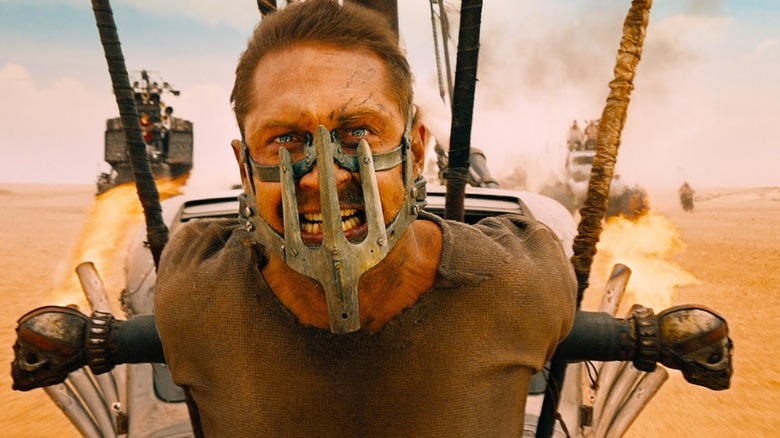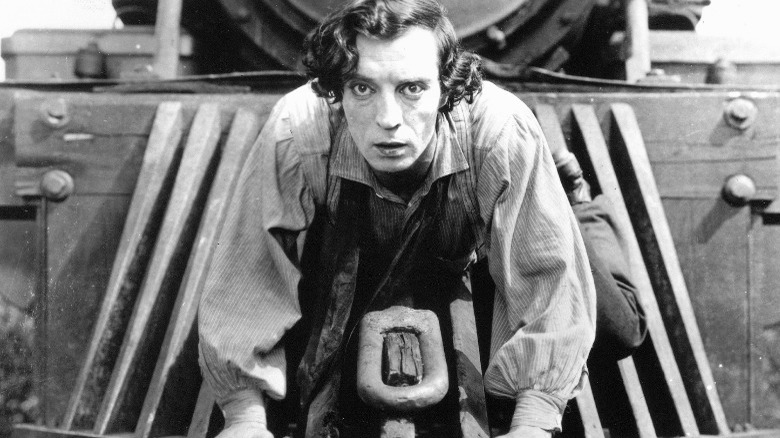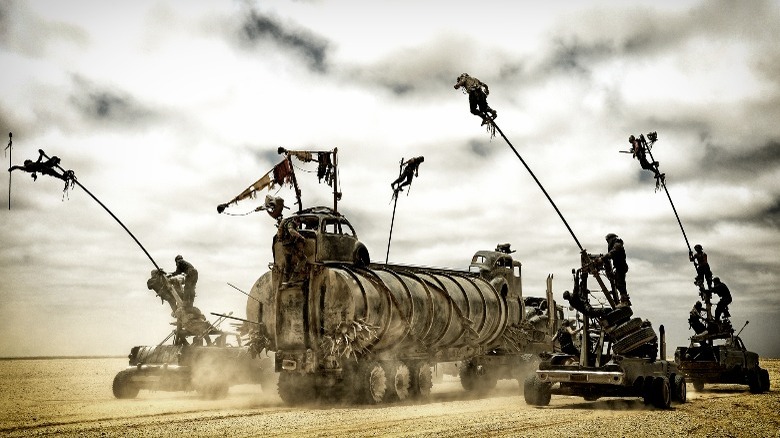
An age in which the use of CGI reigns supreme in Hollywood blockbusters means that audiences tend to be less impressed about the scale of imaginary worlds and the scope of action-packed battles, but "Mad Max: Fury Road" stands out as a milestone achievement in practical effects and visual storytelling. The film feels both groundbreaking in its use of modern technology yet classic in its embrace of traditional filmmaking spectacle that hearken back to the age of the silent film star.
The "Mad Max" films have almost never embraced heavy exposition or long speeches, and Max Rockatansky himself resembles gritty antiheroes like Clint Eastwood's The Man with No Name more than the fast-talking, quippy heroes that reign in today's blockbusters. Max is famously curt in his delivery, grunting and tongue-clicking more than actually talking, and his co-stars often follow his lead. This lack of dialogue may make it seem as if death-defying action setpieces take precedent over story, but the films show a remarkable degree of world-building, myth-making, and character-building. It's not that they're mind-numbingly bombastic, it's that director George Miller took cues from the silent film era in order to create a truly cinematic experience through the valuable adage of "show, don't tell."
Trains And Automobiles

Miller attributes the influence of silent films not only to the "Mad Max" series, but his entire filmmaking style ever since he began his career. In an interview with Vulture, he explains:
"The real [visual] language was defined during the silent cinema, which brought all the action and chase movies, the real Westerns, and particularly Harold Lloyd and Buster Keaton. So one of the things that drew me to Fury Road was to be able to go back into that area, and see what we can do now with all the tools that are available."
An interesting note here is that Miller explicitly references comedic stars, both of whom were also the stars of the sort of "action and chase movies" the director mentions. Harold Lloyd was as much of a stuntman as he was a physical comedian, and he often performed his own stunts. Even if the name doesn't sound familiar to modern audiences, the image of Lloyd dangling from a giant clock tower in "Safety Last!" has been copied by the likes of Martin Scorsese and Robert Zemeckis. Likewise, Buster Keaton's most famous film, "The General," centers around a train chase that no doubt influenced the vehicular chases of "Fury Road," while a New Yorker article astutely points out that the Polecats who vault from one car to the next evokes Keaton hanging from a drainpipe in "Three Ages."
Silent Storytelling

The "Mad Max" films aren't totally devoid of comedy, reveling in a gleeful sense of anarchy that's just ludicrous enough to be fun while still remaining confidently badass. No one can deny that the blind Doof Warrior shredding his guitar isn't at least a little bit comically ridiculous, or that Tom Hardy's performance as a very sressed-out living car ornament isn't channeling the slapstick greats. However, Miller's meticulous filmmaking brings an order to all that chaos and, miraculously, paints full character arcs and brings the post-apocalypse to life. He says of the lack of expository dialogue:
"...I always think that if you walk into a new culture, or you go to a new country that you don't know a lot about, you see behaviors, gestures, and an aesthetic that you might not understand, and yet you accept it and believe that these things have meaning. If a character sprays his mouth with gold paint — as long as the audience believes the character knows why he's doing that, and it's consistent within the logic of the world you've set up, then the audiences accepts it. You don't need a footnote to describe exactly what it means."
The silent chase films not only informed Miller on how to structure action scenes, but also how to tell a complete narrative with as few words as possible. It's this balance between explosive stunt performances and visual storytelling that elevates "Fury Road" from popcorn blockbuster to cinematic masterpiece.
Read this next: The 20 Best Westerns Of All Time
The post George Miller Took A Page From The Buster Keaton Playbook For Mad Max: Fury Road appeared first on /Film.
0 Commentaires